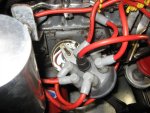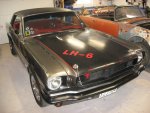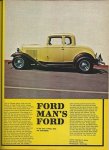I am going out on a limb here, but carbs are not outdated. While I'm at it, neither are points ignitions. At 76 years and an ASE engine mechanic I have lots of experience with carbs. The Autolite 2100/2150 two barrel is excellent for a daily driver, and points work great up to about 5,000 rpm. Ford spent over a million bucks in 1957 to design the best carb available, which would be about 7-10 million today, and came up with Annular Atomization. It works great and Ford had the patent for 50 years. When it ran-out Fuel-Injection was the norm, so little attention was paid to carbs. For the record FUEL-INJECTION IS BETTER with today's computer controls. Unfortunately we tend to ignore what was really good in the past opting for NEW MUST ALWAYS BE BETTER. With computer-controlled timing and fuel control, carbs disappeared...but they still work, and do not need a computer, MAP, MAS, TPS, O2 sensor, Knock sensor, RPM reading, air-temp, phases of the moon, time of day, heart rate, blood pressure, higher fuel pressure, or anything electronically controlled. OH, my degree is in electronics and I chased electrons in home entertainment equipment for 20 years. For reference, points make a much longer spark than electronics and that is why MSD (Multiple Spark Discharge) was invented to simulate the mechanical (points) long spark. That partially solved the problem of the hotter electronic spark that was much shorter...but not completely. At some RPM "points do better" than electronics. That is MSD's testing not mine, though I agree. My 65 Mustang 6 gets 25 mpg highway running the A/C with no electronics except Pertronix, which is what it gets with points. I am building a 67 Sunbeam Alpine installing a Ford 2.3 out of a Mustang and backing it with an A4LD overdrive. I spent 50 years building Street Rods and even had a 32 Ford coupe appear on the cover of Performance CARS magazine and Centerfold, and a color story in Rod Action back in 1976. For a decade I was shop super for a city responsible for Cop cars, Ambulances, Fire equipment, and Police department/officers firearms. I am a Federally Licensed gunsmith also. My point (sorry) is, for those wanting to simplify their fuel/ignition system, don't ignore the old stuff. When upgraded with the best available parts, a hotter coil, better wires, platinum plugs, tuned for maximum torque, highway power/economy will NOT suffer enough to notice. For those thinking points require too much attention, every 5,000 miles is driving across the U.S. and back. If you are not looking under the hood more often than that...you are NOT a real car guy. I know this will start a debate, which is good. I just wanted the younger guys to understand one can update an old points system and make it better...with zero computers.
















